Youth Care Treatment Center and school has helped teens with ADHD all over the United States for 30 years. Our unique approach is based off of solid morals and beliefs to help adolescents be successful in turning their lives around.
Understanding ADHD
Learn about ADHD
Attention-deficit/hyperactivity disorder (ADHD) is a highly common behavioral disorder that often carries into adulthood. Individuals who have ADHD grapple with staying focused or paying attention, as well as controlling their behaviors. Additionally, they often appear overly active at times. All of these symptoms make it exceptionally challenging for a child or adolescent to prosper in school, get along with others, and carry out responsibilities at home. Individuals with ADHD often face difficulties with low self-esteem and interpersonal relationships. Some of the symptoms of ADHD will decrease over time; however, there are individuals who may never outgrow them.
There is no cure for ADHD, however, receiving appropriate treatment can help individuals learn how to manage their symptoms. In addition, with the right treatment, individuals with ADHD can achieve success at school and have highly productive lives.
Statistics
ADHD statistics
ADHD is a common disorder that impacts between 8% and 10% of school-aged youth, with boys being three times more likely to suffer from it than girls. The American Psychiatric Association (APA) states that roughly 5% of children and 2.5% of adults have ADHD.
Causes and Risk Factors
Causes and risk factors for ADHD
The development of ADHD has been linked to a number of possible causes and risk factors, which are described briefly in the following:
Genetic: Children and adolescents who have first-degree biological family members who suffer from ADHD are more likely to suffer from the symptoms of the disorder themselves than are those who do not possess this type of family history. According to the APA, attention-deficit/hyperactivity disorder is a substantially heritable condition, yet the presence of specific genes are not necessary for symptoms of ADHD to develop.
Environment: Some experts in the field of mental health believe that there may be a connection between smoking cigarettes and drinking alcohol during pregnancy that can lead to an increased risk for ADHD in children. Additionally, the APA notes that having a very low birth weight can raise a child’s chances for developing ADHD, yet most children who have a low birth weight do not go on to suffer from this disorder.
Risk Factors:
- Family history of ADHD
- Reduced behavioral inhibition
- Prenatal exposure to cigarettes
- Prenatal exposure to alcohol
- Being male
- Having multiple foster care placements
- History of child abuse
- Possessing a novelty-seeking temperament
- Possessing negative emotionality
Signs and Symptoms
Signs and symptoms of ADHD
The signs and symptoms of ADHD will vary depending on each child and the subtype of the disorder that he or she is suffering. The following symptoms are categorized into three subtypes and include examples of their behavioral patterns:
Inattentive type:
- Is easily distracted
- Has a tendency to lose things
- Has a difficult time following directions
- Dislikes or avoids tasks that require mental effort
- Problems with organization
- Appears to have problems listening
- Has difficulty maintaining attention during tasks or playtime activities
- Forgetfulness
- Is unable to pay attention to details or has a tendency to make careless mistakes
Hyperactive-impulsive type
- Blurts out answers
- Has a hard time waiting his or her turn
- Often interrupts or intrudes on others
- Talks excessively
- Often runs around and/or climbs on things
- Seems to always be on-the-go
- Is constantly fidgeting or squirming
- Has difficulty playing quietly
- Has a hard time staying seated
Combined type: This is the most common form of ADHD and includes a variety of symptoms from both the inattentive type and the hyperactive-impulsive type.
Effects
Effects of ADHD
If not treated appropriately, the long-term effects of ADHD can make one’s life tremendously complex. Some of the negative effects of this disorder when it remains untreated can include:
- Problems at home
- Increased risk for substance abuse
- Poor self-esteem
- Difficulty interacting with and being accepted by peers
- Having more accidents and obtaining injuries
- Relationship difficulties
- Academic failure
- Being judged by other children and adults
Co-Occurring Disorders
ADHD and co-occurring disorders
Many children and adolescents who have ADHD also struggle with accompanying mental health conditions. Those who have ADHD are six times more likely to have at least one other psychiatric condition or learning disability. The most common disorders that co-occur with ADHD can include:
- Tic disorders
- Autism spectrum disorder
- Obsessive-compulsive disorder
- Disruptive mood dysregulation disorder
- Specific learning disorder
- Conduct disorder
- Oppositional defiant disorder
- Anxiety disorders








